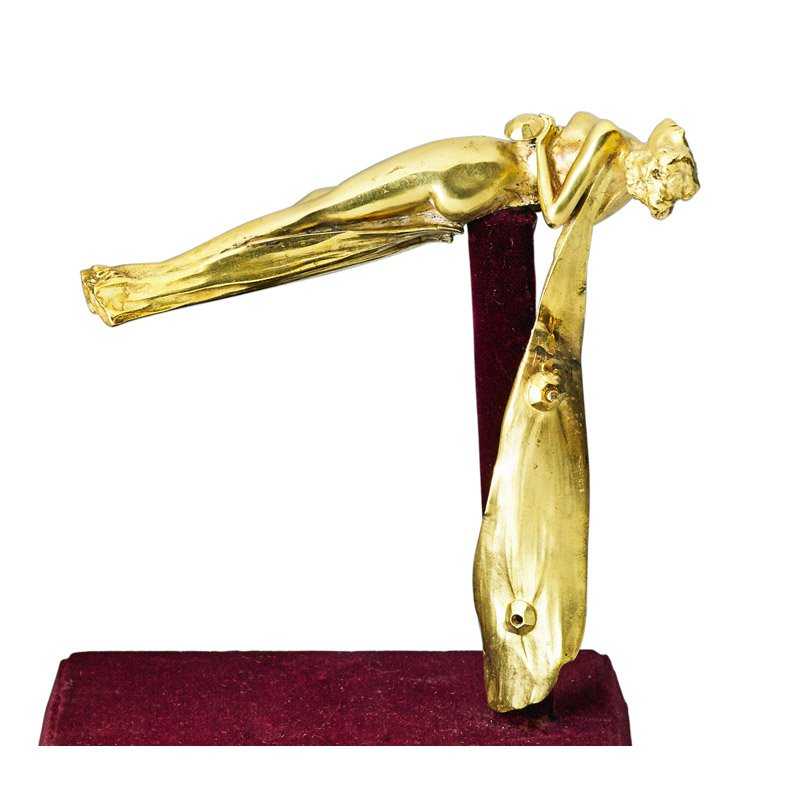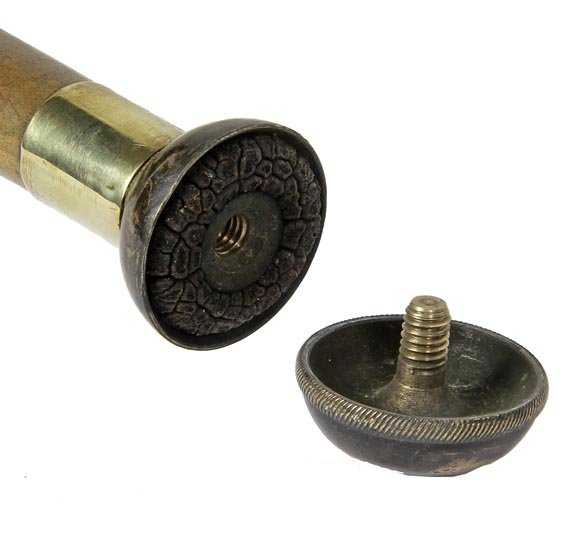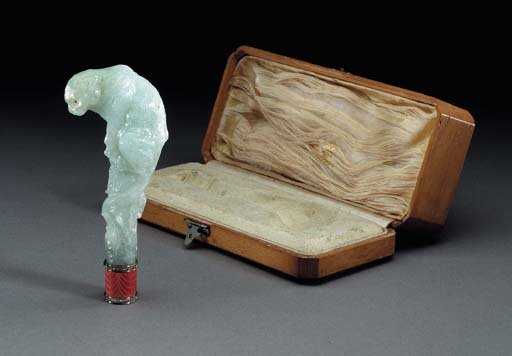
NEW YORK — In years past, a cane, or walking stick, wasn’t just an aid to mobility; it was more of a gentleman’s fashion accessory.
Walking canes of centuries ago were elegant pieces of art, usually topped with a piece of carved and polished wood, ivory or quartz; or bejeweled. The length of the cane shaft was often highly decorated or carved. Some canes were even designed to contain hidden items or gadgets, from a sword to a gun or a measure of liquor. Today, antique canes are extremely popular with collectors, who view them as elegant symbols of a bygone era.
Kimball M. Sterling, owner of Kimball M. Sterling, Inc., in Johnson City, Tenn., auctions antiques of all kinds but has long specialized in canes. “I have sold over 9,000 canes, and every cane I have sold has been a piece of art in itself,” he said.
There are three basic type of canes: dress canes, system canes and folk art canes, he said. A dress cane is quite ornate, made with aesthetics in mind and suitable for a fancy dinner or a night at the opera. The makers often utilized gold, silver, enameling, glass, ivory and porcelain. Less formal than dress canes are folk canes made of elaborately carved wood, and often whimsical. Boasting clever designs, system canes — which are very popular with collectors — have hidden compartments in which the owner could stash a sword or gun inside the shaft for self-protection, a beverage for sipping, or a fishing pole to use on a fine spring day.

Ivory was used in canes for centuries, but after the United States enacted an ivory ban in July 2016, in an effort to protect endangered elephants from poachers and other profiteers, the stateside market for ivory canes plummeted. However, the nature of collecting being what it is, buyers simply turned to other types of canes.
“People are starting to appreciate the American folk art cane,” Sterling said. “The folk art cane is what I call a labor of love.”
Folk art canes were usually handcrafted and intended to be gifts. There were quite a few notable makers. Michael Cribbins (1837-1917) from Orion, Michigan, was a well known cane maker who had a penchant for Civil War and Masonic wooden canes. His designs featured a method known as “open carving.”
Another type of cane gaining in popularity, although not legal in all states are firearm canes, Sterling said. “In the 1850s and ’60s, commercial gun companies made canes that doubled as guns. The market is up 30 to 40 percent for fine examples.”

A highly collectible subcategory of dress canes, Sterling said, is the genre known as objets de vertu, or objects. “When it comes to objects of virtue, there are very, very fine dress canes, and a lot of then have jewels on them, like diamonds or just an elegant piece of gold.”
Many collectors like to buy presentation canes, which can be found in any of the three major cane categories. In the past, a head of a corporation, steel mill or railroad might have received a presentation cane as a joint gift from their employees. One of the most expensive presentation canes on LiveAuctioneers was a fine example sold by Heritage Auctions in June 2012 for $95,000, notable more for its shaft than its handle. The cane’s shaft was made from the final tie used to complete the Transcontinental Railroad in 1869. It is engraved “E. T. Abbott from D. Hewes / Made from the tree of the Last Tie – May 10, 1869.”
While working in France as ambassador, Benjamin Franklin was presented a gold-capped cane made by a fan in 1783. Franklin later gifted the cane to George Washington, and today it is in the collection of the Smithsonian’s National Museum of American History.
“One of the most popular presentation canes would be something like a gold-filled dress cane, which was made by a company called Simmons,” Sterling said, noting that these canes were often presented as gifts for Christmas and usually have a Christmas date engraved on them. As a result, they are commonly called “Christmas canes.”
From the 1850s, the cane you would want to wear (yes, in cane lingo, one wears not carries a cane) would be a gold quartz cane from the Sutter’s Mill area where the California Gold Rush began. “It’s basically white quartz with gold nuggets,” Sterling said, saying they can sell anywhere from $3,000 up to six figures.
The best cane Sterling said he has sold was one with a handle made by Faberge that had solid provenance to the late actor Yul Brynner’s wife. It achieved $30,000 in June 2016 and had a bowenite carving by Carl Faberge of a squirrel-size tamarin climbing monkey. It was set with cabochon ruby eyes and mounted with an enamel, gold and diamond-set collar.

“You have to watch out for fakes. When I had the Faberge cane, it had [provenance] going back to Brynner’s wife,” he said. “When you spend big money for canes, you want the provenance. If it looks too good and the item does not have a provenance, don’t buy it. And don’t buy ten cheap canes. Save your money and buy better canes. Go for quality, not quantity, and don’t buy something just because it’s valuable. Buy something you like.”
# # #



